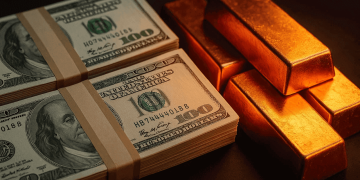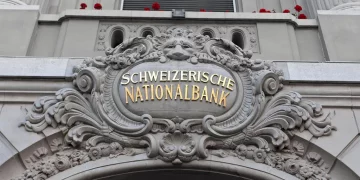The Shifting Landscape: How High Rates Reshape Dividend Strategies
In the era of near-zero interest rates, dividend stocks were lauded for offering reliable income and relative stability. Utilities, consumer staples, real estate investment trusts (REITs), and telecoms became investor favorites, prized for their consistent payouts and defensiveness. But as global central banks—led by the U.S. Federal Reserve—have embarked on aggressive tightening cycles to combat inflation, the narrative around dividend stocks has become more complicated. Higher interest rates raise the yield investors can earn on “risk-free” assets like Treasury bills and money market funds, making dividend stocks comparatively less attractive. Furthermore, higher borrowing costs pressure the balance sheets of capital-intensive sectors like utilities and real estate, which are heavily reliant on debt. This leads to compressed margins, increased default risk, and even potential dividend cuts. Investors are now forced to ask: Are dividend-paying stocks still the safe havens they used to be, or are some merely yield traps disguised as income plays?
Utilities, REITs, and Staples: No Longer Immune to Macro Headwinds
Historically, utilities and REITs offered a dependable combination of low volatility and steady dividends, but in today’s high-rate climate, their structural weaknesses have been exposed. Utilities, for example, operate in regulated environments where pricing power is limited. Yet they require heavy capital expenditure to maintain and expand infrastructure, funding much of it through debt. With rising rates, the cost of capital increases, shrinking free cash flow and making dividend growth harder to sustain. REITs face similar constraints. Many are highly leveraged and depend on refinancing debt—sometimes short-term—to fund operations and payouts. In a world of higher rates and tighter credit conditions, this exposes REITs to refinancing risk and erosion in net operating income. Even consumer staples, known for pricing power and demand inelasticity, are feeling the squeeze as inflation pressures cost structures and consumers trade down to cheaper alternatives. Screening these sectors purely for high yields without digging deeper into their debt structure and payout coverage now carries significant risk.
Cash Flow Stability: The New Metric for Dividend Safety
In this new environment, investors can no longer rely on yield alone as a measure of safety. Instead, focus is shifting toward cash flow stability, dividend coverage ratios, and balance sheet resilience. Free cash flow (FCF)—cash left after capital expenditures—is a vital metric. A consistent, positive FCF indicates that a company can sustain dividends without borrowing or asset sales. Equally important is the payout ratio, typically measured as dividends paid divided by earnings or FCF. A payout ratio above 80% can be a red flag, especially in cyclical sectors. Investors should also examine interest coverage ratios and net debt-to-EBITDA to assess whether a company is financially flexible enough to absorb rate shocks without sacrificing dividends. Screening tools that incorporate these factors—rather than just yield or dividend history—provide a clearer picture of true dividend quality. Companies with strong moats, minimal debt, and diversified revenue streams are increasingly prized over those offering the highest nominal yields.

International Dividend Aristocrats: Safer Shores or New Risks?
While U.S. dividend stalwarts face mounting pressure, international markets offer both opportunity and complexity. European dividend stocks—particularly in countries like Switzerland, the UK, and the Nordics—have long histories of steady payouts and stronger balance sheets, aided by conservative fiscal and corporate governance cultures. Japan, amid corporate governance reforms and capital efficiency pushes, is producing a new generation of dividend growers. Additionally, emerging markets like Taiwan and South Korea host globally competitive firms with attractive yields and underappreciated dividend track records. However, international investing brings new variables: foreign exchange risk, different tax treatments, and geopolitical exposures. For example, a rising U.S. dollar can erode the value of foreign dividends for American investors. Tax treaties vary across jurisdictions, with some countries withholding significant portions of dividends unless proper exemptions are filed. Still, international dividend ETFs and ADRs can provide diversified exposure while mitigating individual country risk. For long-term investors, combining global dividend aristocrats with rigorous screening can deliver yield without sacrificing stability.
Avoiding Yield Traps: Lessons from High-Profile Cuts
The dividend investing world is littered with examples of companies that seduced investors with high yields, only to slash payouts and crater share prices. Yield traps typically occur when a company’s dividend yield spikes due to a falling stock price rather than increasing payouts. A classic case is when earnings decline or debt levels rise dramatically, and the market anticipates a cut—before it actually happens. In recent years, telecoms, cyclical industrials, and energy firms have featured prominently in this narrative. The key lesson is that high yield should trigger scrutiny, not blind enthusiasm. Red flags include deteriorating cash flow, shrinking margins, excessive leverage, and unsustainable payout ratios. Another warning sign is management’s unwillingness to discuss dividend policy transparently, or a history of erratic payouts. Using screening tools that incorporate fundamental health scores, dividend durability models, and forward-looking estimates can help investors spot trouble before it becomes painful. Discipline and due diligence are non-negotiable in this higher-rate era.
Rebalancing Dividend Portfolios: Sector Shifts and New Leaders
As the high-rate environment reshapes dividend investing, portfolio composition must evolve. Investors are increasingly tilting toward sectors with structural advantages in managing rate pressures. For example, energy companies—especially integrated oil majors with strong cash flows and low payout ratios—have emerged as attractive dividend plays. Financials, particularly large-cap banks and insurers, can benefit from higher interest income and return capital through dividends and buybacks. Technology, once overlooked for yield, now includes mature firms with fortress balance sheets and growing dividends—think Microsoft, Apple, and semiconductor leaders. Health care, too, provides stability with global drugmakers and medical device firms boasting generous and growing dividends. Importantly, diversified dividend ETFs and funds with quality screens are outperforming simple high-yield trackers. Investors should consider shifting from a pure yield approach to one centered on total return, including capital appreciation, dividend growth, and reinvestment opportunities.
Tax and Income Planning in a Changing Dividend Landscape
Tax efficiency is a growing concern as rising yields push more investors into income-generating strategies. In the U.S., qualified dividends receive favorable tax treatment compared to ordinary income, but this varies by holding period, account type, and income bracket. Holding dividend stocks in tax-advantaged accounts such as IRAs or Roth IRAs can help defer or eliminate tax liability. International dividends may be subject to foreign withholding taxes unless held in tax-exempt accounts or reclaimed through tax credits. Investors using dividend strategies for retirement income must also factor in sequence-of-returns risk and inflation erosion. Flexible income planning—combining dividends with bond ladders, annuities, and withdrawal strategies—offers better resilience. For high-net-worth investors, trust structures and charitable strategies can further optimize tax impact. The key is aligning income goals with after-tax return expectations, rather than simply chasing high-yield names.
Conclusion: From Yield Chasing to Quality Income Investing
Dividend investing in 2024 demands a more sophisticated, disciplined approach than in prior cycles. Gone are the days when low interest rates made almost any high-yield stock look attractive. In today’s higher-rate environment, investors must carefully distinguish between sustainable dividends and yield traps. Sector resilience, cash flow health, balance sheet strength, and payout discipline are now the core pillars of a successful dividend strategy. International diversification adds both opportunity and complexity but can enhance overall yield quality. Tools and screening models that emphasize fundamentals over raw yield are essential for navigating this landscape. Ultimately, dividend stocks can still serve as safe havens—but only when investors prioritize quality, stability, and total return over headline yield figures. The new dividend playbook is not about chasing the highest payouts but building a durable, income-generating portfolio that can weather rate volatility, inflation, and global uncertainty.













































